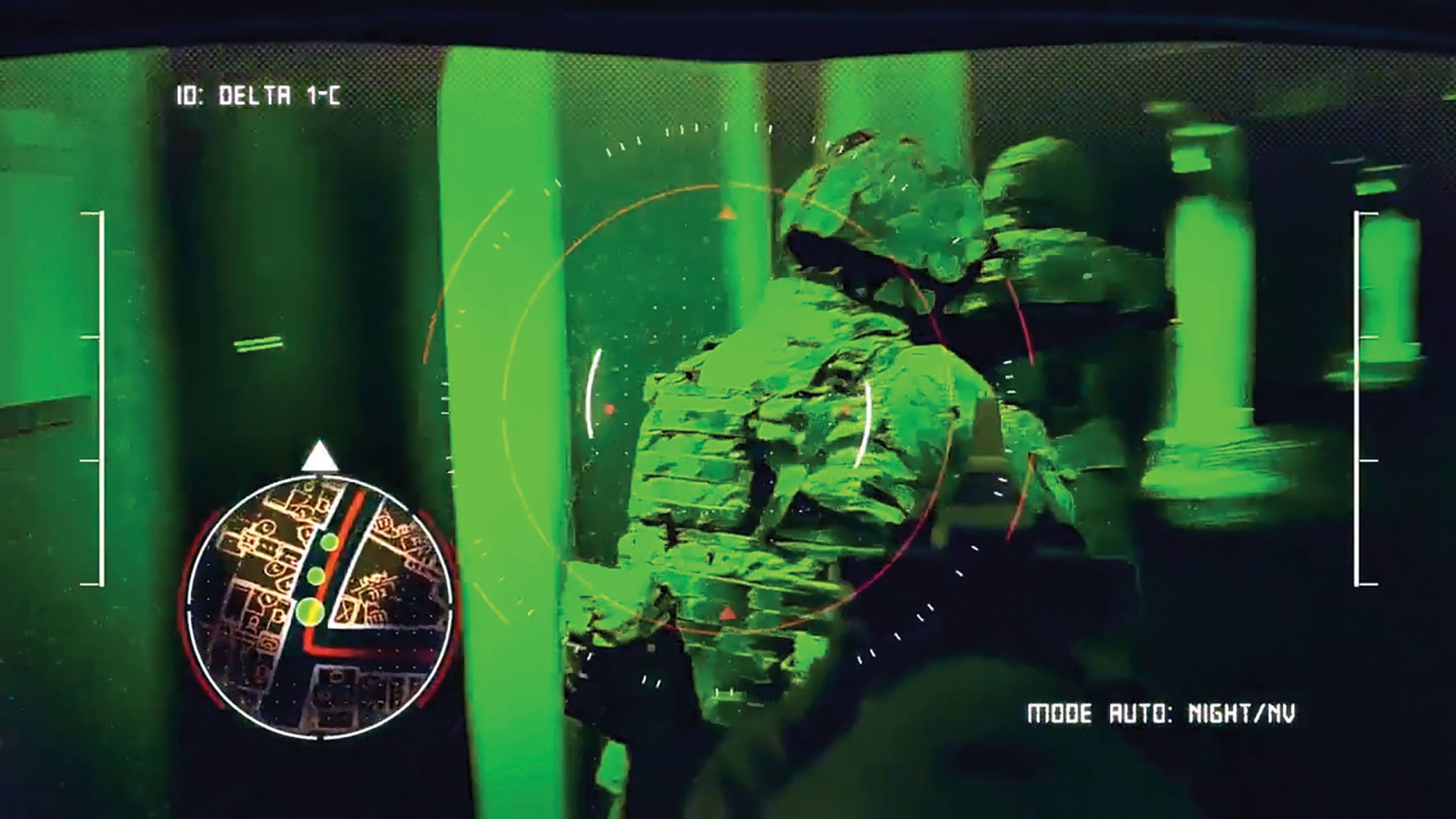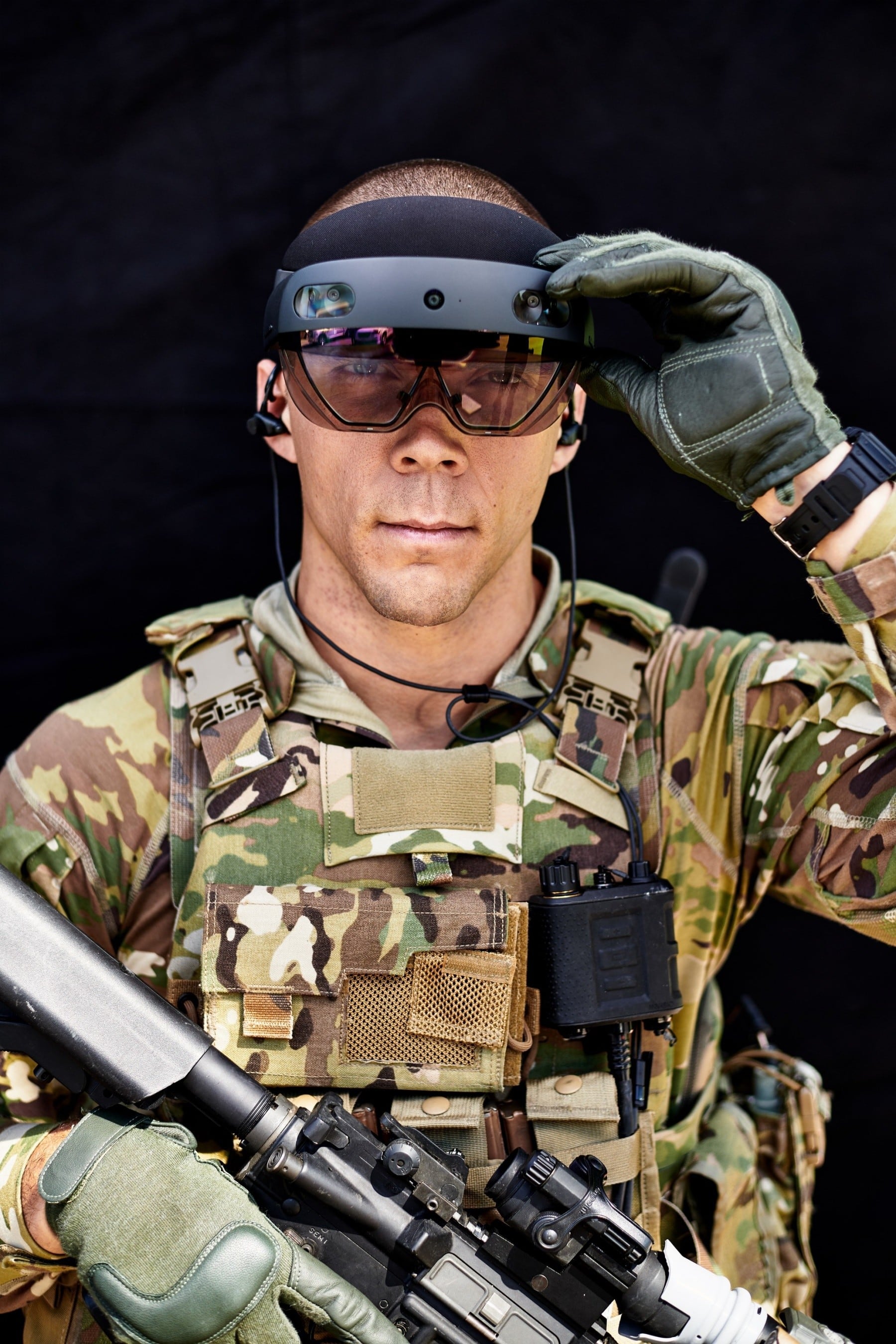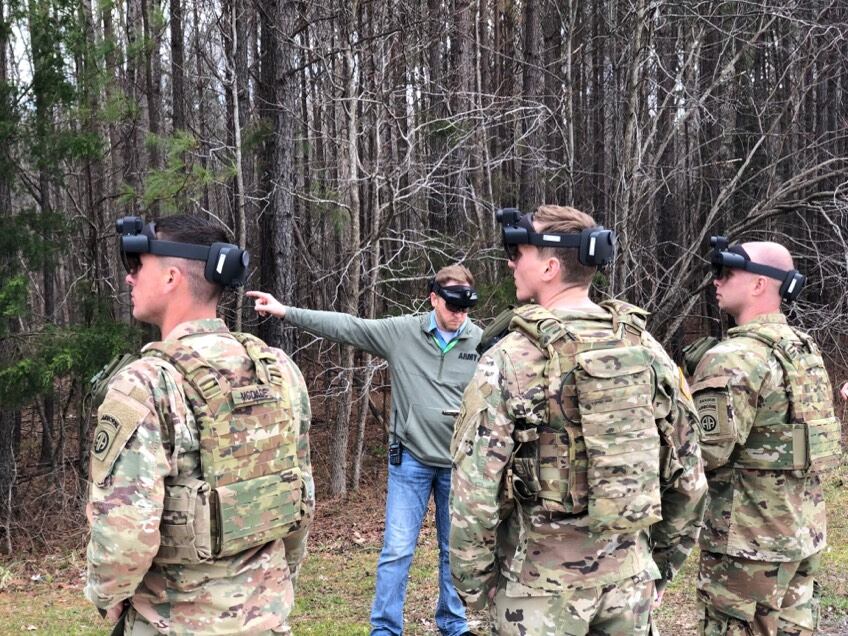ARLINGTON, Va. – The Army wants to buy enough of a new augmented reality, do-it-all goggles to outfit nearly half of all close combat forces, from infantry to scouts and engineers, starting next year.
This week, the service released its fiscal year 2021 budget, which will have to go through lengthy scrutiny and likely changes by Congress before becoming official, and is requesting 40,219 Integrated Visual Augmentation Systems, or IVAS.
The IVAS has been championed by top Army brass, including Chief of Staff Gen. James McConville, as a way to deliver fighter pilot-like situational awareness to the individual soldier in an infantry squad.
Late last year, Army officials targeted late 2021 for beginning IVAS fielding. No specific unit has been identified as the first intended to receive it but Army brass have said it would go to “top tier” units before rolling out to other infantry formations.
The service is asking for more than $906 million for IVAS efforts next year and just over $1 billion the following year. Funding drops to about $320 million in fiscal year 2023 and to less than half that amount, or $148 million by fiscal year 2025, which is as far as budget documents project on these types of programs.
Those decreases are due in part to the number of devices being procured and fielded are expected to fill out the ranks of the “close combat 100,000” that the IVAS is intended to serve.
That round number has been used largely by the Army and Marine Corps in reference to efforts by both services and the special operations community to acquire funding for new and better gear and training for those ground troops at the leading edge of combat.
Brig. Gen. David Hodne, director of the Army’s Soldier Lethality Cross Functional Team, told reporters last year that the IVAS would first be fielded to top tier units and then disseminated across the close combat force.
Starting with the Microsoft HoloLens 2 virtual reality headset, researchers have been testing ways to link that goggle and an advanced Heads-Up Display to Nett Warrior for information sharing across squads. That same capability would also allow other networked units to share data.
RELATED

But it’s more than sharing a view. Developers have also included weapons sight view that would help soldiers acquire targets, see through smoke and dust and run in daytime and nighttime environments.
Other engineering work gives the device navigation and wayfinding abilities and can link to a Stryker or other vehicle to upload information to the larger formation when soldiers are transiting across the battlefield.
Software development described in the budget and discussed by officials over the past year is expected to add facial recognition capabilities at tactical distances to the goggles.
But Army officials are looking beyond a view from the goggles and even the soldier’s weapon’s sight. They also want users to be able to plug into tactical-level drones, such as the Black Hornet mini drone that was fielded last year for short-range squad reconnaissance.
On Tuesday, Maj. Gen. Paul Chamberlain, director of Army budget, confirmed the procurement numbers listed in the budget but did not immediately have specific fielding information. However, he expected that the Army would move quickly to field the devices.
Army Times interviewed soldiers and Marines at Fort Pickett, Virginia, during the first “soldier touch point” for the device in April 2019.
At the time, users had run through small team drills in a field environment and ran indoor live fires. Those included mission planning using the device’s mapping software.
A second soldier touch point was held at Fort Pickett over three weeks from late October through late November.

Some of that work included not only the tactical marksmanship, navigation and information sharing but also looked at using the goggles to monitor the individual user’s performance from muzzle position to reaction times.
In the second round a squad-sized element planned and executed a full mission at night in forest and training villages at the fort, according to an Army statement.
The next soldier touchpoint is scheduled for summer 2021, an Army statement said.
Todd South has written about crime, courts, government and the military for multiple publications since 2004 and was named a 2014 Pulitzer finalist for a co-written project on witness intimidation. Todd is a Marine veteran of the Iraq War.




